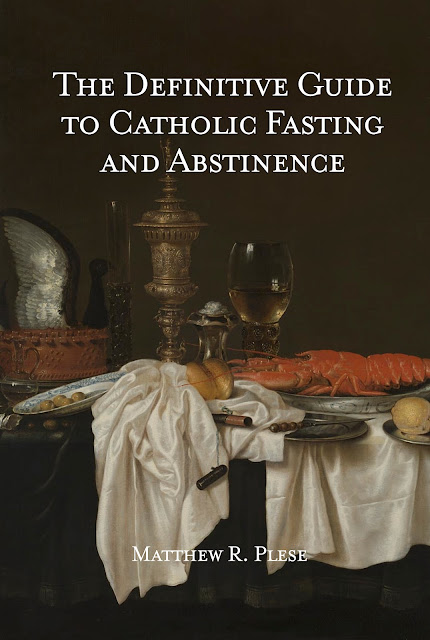Today is one of the most holy days in the year - Pentecost Sunday (also known as Whit Sunday)! As the Catholic Dictionary of Fr. John Hardon summarizes, today's holy day "commemorat[es] the descent of the Holy Ghost on the Apostles. It takes its name from the fact that it comes about fifty days after Easter. The name was originally given to the Jewish Feast of Weeks, which fell in the fiftieth day after Passover, when the first fruits of the corn harvest were offered to the Lord (Deuteronomy 16:9), and later on the giving of the law to Moses was celebrated."
Our celebration is based on a greater gift than that of the Two Tables of the Law to Moses - today we celebrate the Apostles and Our Lady receiving God Himself - the Holy Ghost. As the Acts of the Apostles, Chapter 1, illustrates, there were 120 people praying for the Holy Ghost. And just as the heavens opened and a dove descended in the Baptism of Jesus, the Holy Ghost descended on the Apostles and the Blessed Virgin Mary at Pentecost. How truly remarkable and breathtaking it would have been if we were there to see tongues of fire falling from the sky. But that is what happens to each of us, though invisibly, at our own Confirmation. The same Spirit is within those that have been confirmed in the Catholic Church. We have the Holy Ghost and we have the responsibility to go out and be beacons of the light of Christ, just like the Apostles did.
The word "Pentecost" means "fifty days" because today's celebration is fifty days after the celebration of the Lord's triumphant Resurrection on Easter Sunday. Pentecost, traditionally after the completion of its Octave, officially ends the Season of Pascaltide. There is a Plenary Indulgence available today.
Dom Gueranger provides us with this account of the liturgy of Pentecost Sunday:
The Christian Pentecost, prefigured by the ancient one of the Jews, is of the number of the feasts that were instituted by the apostles. As we have already remarked, it formerly shared with Easter the honour of the solemn administration of Baptism. Its octave, like that of Easter, and for the same reason, ended with the Saturday following the feast. The catechumens received Baptism on the night between Saturday and Sunday. So that the Pentecost solemnity began on the vigil, for the neophytes at once put on their white garments: on the eighth day, the Saturday, they laid them aside.
In the middle-ages, the feast of Pentecost was called by the beautiful name of ‘The Pasch of roses,’ just as the Sunday within the octave of the Ascension was termed the ‘Sunday of roses’. The colour and fragrance of this lovely flower were considered by our Catholic forefathers as emblems of the tongues of fire, which rested on the heads of the hundred and twenty disciples, and poured forth the sweet gifts of love and grace on the infant Church. The same idea suggested the red-coloured vestments for the liturgical services during the whole octave. In his Rational (a work which abounds in most interesting information regarding the mediæval liturgical usages), Durandus tells us that, in the thirteenth century, a dove was allowed to fly about in the church, and flowers and lighted tow were thrown down from the roof, during the Mass on Whit Sunday; these were allusions to the two mysteries of Jesus’ baptism, and of the descent of the Holy Ghost on the day of Pentecost.
When we read the Old Testament we realize that it mirrors and foreshadows the New Covenant in Christ. In the Old Testament, Jews celebrated Pentecost as an important feast to commemorate Moses receiving from God the Tablets of the Law. Yet, for us Christians, we celebrate an even greater gift today - receiving the Third Person of the Trinity, God Himself, into our souls!
And the account of the Descent of the Holy Ghost holds another important lesson - prayer is necessary. After praying fervently for nine days Mary and the apostles receive the gift from on high. And it was when Jesus was praying after His baptism that the Heavens opened. It was during prayer that Jesus was transfigured on Mt. Tabor. Today we recall that the Holy Ghost descended during prayer. Let us keep the importance of prayer in mind. Prayer is after all necessary for salvation.It was through the Spirit that the Apostles, the men who ran in fear during the Crucifixion, were given the courage to bring Jesus Christ to the whole world. They would not just bring Him to the people of Judea but to Gentiles (i.e. non-Jews) - to the whole world.
Pentecost also shows us the reversal of Babel as The Church's Year of Grace by Father Pius Parsch explains:
One final question: why the miracle of tongues? In answer, recall the story regarding the tower of Babel. Puffed up by pride, men attempted to build a tower that would touch the heavens. To punish their sin, God confused their speech. Sin causes confusion and division. Now Christ came to gather all men into His Church and thereby to unite them to Himself. This should result in creating but one family of nations again. To this blessed state the miracle of tongues points. Yes, even we as individuals have a gift of tongues which all men can understand. It is the gift of love infused into us by the Holy Spirit. Love unites, love is a common language, by means of love we can speak to all nations.








0 comment(s):
Mag-post ng isang Komento